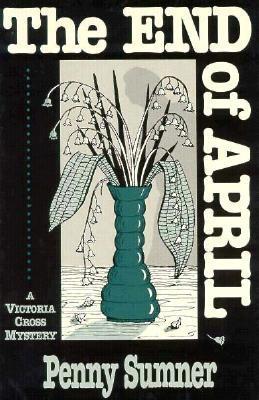Tor Cross is a special kind of private Investigator: one who is trained to authenticate and preserve documents. Her great aunt—an Oxford professor—hires Tor for both of her skills. Not only does and want Tor to validate the authenticity of handwritten Victorian-era erotica, but also to investigate a series of threatening messages received by a law student at Oxford—a beautiful law student, named April Tate. But April dismisses the threats and Tor has to go into overdrive to make sure that April’s complacence doesn’t get her killed. And that means finding whoever is sending the notes.
The setting conjures up Dorothy L. Sayers’ Gaudy Night. In fact, one of the characters even mentions that iconic title. But it also brings to mind other books in this side-genre of lesbian mysteries: murders in the halls of academia. A few come to mind: Report for Murder by Val McDermid, Angel Food and Devil Dogs by Liz Bradbury, Hallowed Murder by Ellen Hart, and even Agenda for Murder by Joan Albarella. I happen to like this motif; the educational settings seem to give the books a grounding in the literary.
The End of April is constructed differently than many other lesbian mysteries in that Tor gets the girl right away—without having to wait until near the end of the story when the mystery has been wrapped up and the love interest is no longer a suspect. And unlike the relationships in some books—in Stoner McTavish, for instance—the attraction between the two women is easy to understand. Both Tor and April are intelligent, outgoing, and immersed in their own special talents. It is a rather spare, easy-to-read novel and because Tor is likable, her first-person narration makes the novel smooth and enjoyable. The writing is always adequate, but in places—like when Tor thinks she has lost April for good and waxes poetic about love—it is both exquisite and wise.
One problem, though, is that it is a chore to remember the actual perpetrator even a day or two after finishing the book. This seems to indicate that the criminal was not really a major character. That’s all right; I don’t believe that the criminal even has to be part of the story at all. What I argue with is that, if the criminal is present, he or she should be memorable. Another small peeve is that Tor’s job transcribing Victorian-era porn gets a way-too-brief mention. Neither the job nor the author of the manuscript she is transcribing is adequately described. It is not impossible that Sarah Waters, in her dazzling Fingersmith, took it upon herself to finish what Sumner started. Kudos to Waters but not to Sumner.
This 1992 novel is part of the second wave of Naiad Press mysteries. As such it has historical significance in the LGBT publishing world. It was even edited by two of Naiad’s shining lights—Katherine V. Forrest and Clare McNab, who wrote the popular Kate Delafield and Carol Ashton series of mysteries respectively. The End of April is a better-than-average mystery with better-than-average characters. Give it somewhere between 3 and 4 stars and add it to the burgeoning list of mysteries set in academic surroundings.

